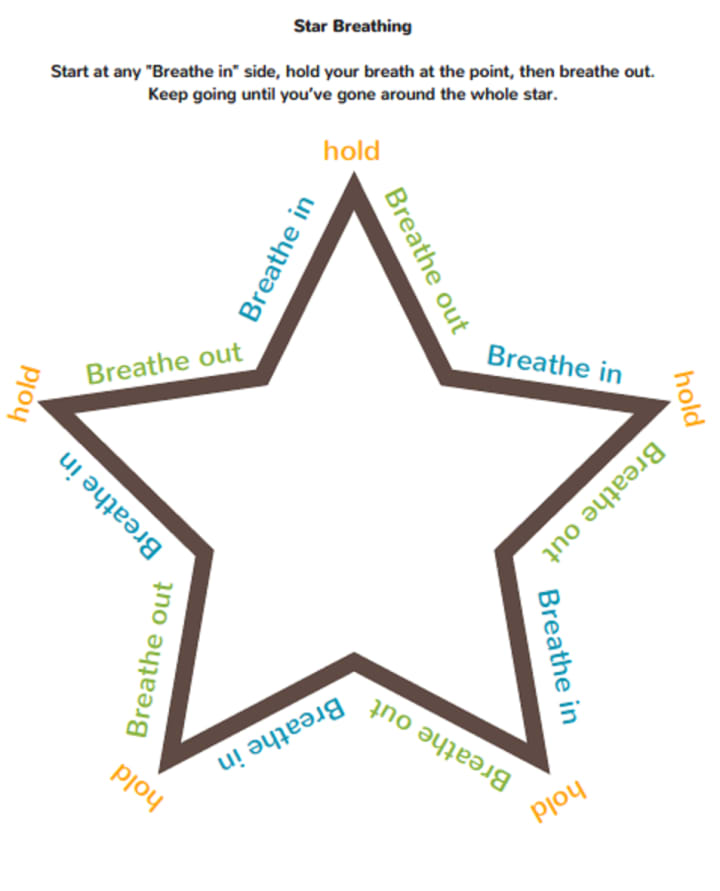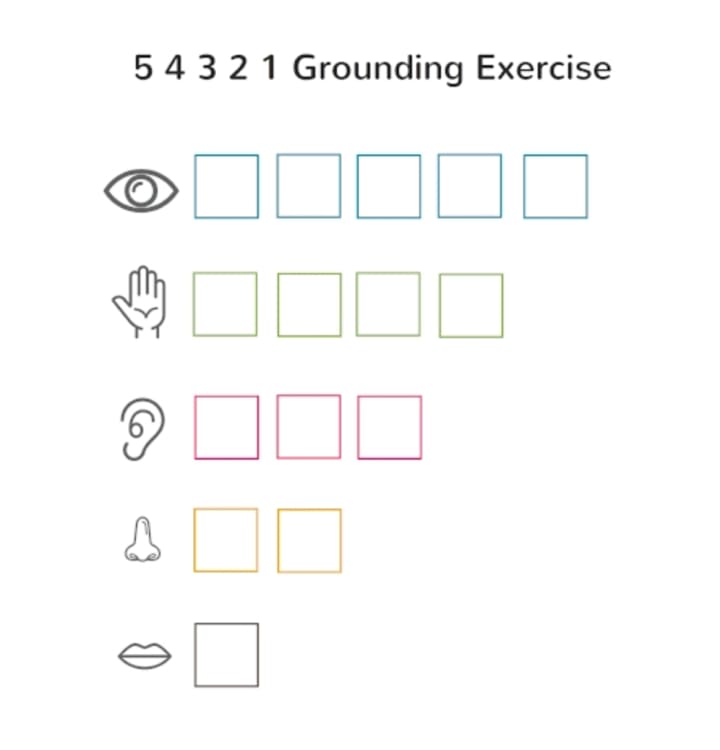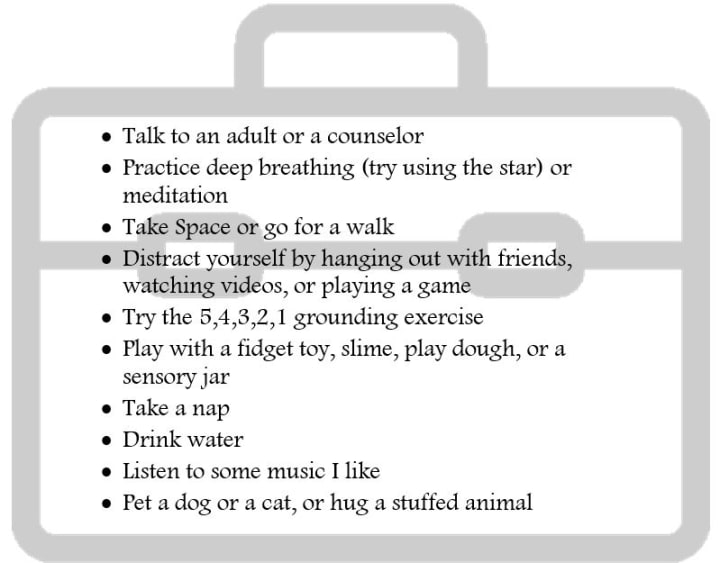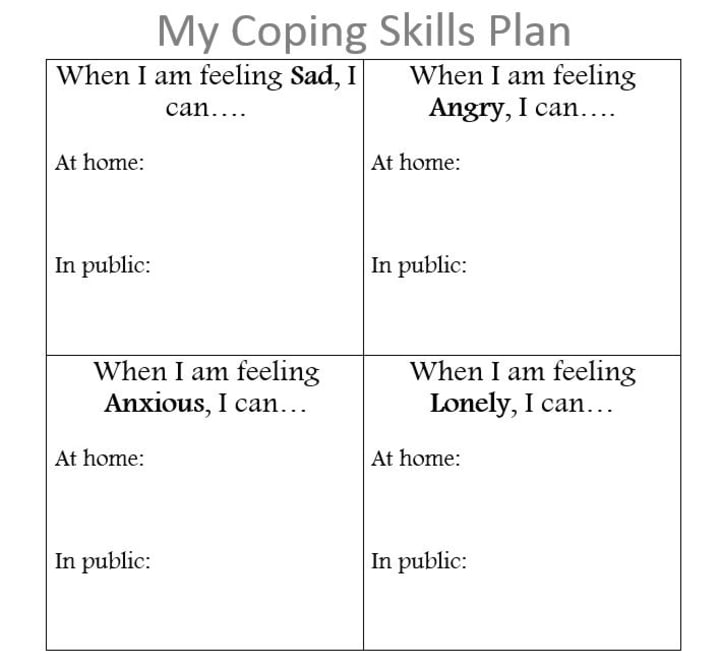Coping Skills Activities for Children
A Guide to Teaching Students Healthy Coping Skills

A student's ability to cope with difficult situations will greatly affect their social, emotional, and behavioral outcomes. Children who learn healthy coping skills are better equipped to deal with complex emotions and have less disruptive behaviors in the classroom which is good for both that child and the classroom as a whole. These activities are a great way to introduce students to strategies that can help them regulate and calm down during stressful or anxious moments in their day.
1. Star Breathing

This activity is incredibly simple and can be done both privately by the student or during set "breathing breaks" in the day. You can also teach students to imagine the star or trace it with their finger into the palm of their hand to help them calm down when they don't have the image in front of them. You can also find deep breathing aids in different shapes online as well.
Materials:
- star print out or whatever shape you like
Have the students place their finger on a "breathe in" side and have them trace the star with their finger while they follow the breathing directions. Afterward, you can have a discussion about how that made them feel and ways or situations it might be helpful during their day.
2. Grounding Exercise

This activity is great for students of all ages because it can be explained as a type of I-spy game. This game works by grounding children in reality and distracting them from the situation that caused them distress. It's also simple to do and can work in public spaces really well. This activity can be done with no materials at all and is commonly used with both children and adults in Cognitive Behavioral Therapy (CBT).
Materials:
- Optional- print out of the senses.
Explain the premise of the game by going through the five senses and assigning a number of things for the student to locate. For example, have the students point out five things they can see, four they can touch, and so on. The last two are often the trickiest. Encourage the students to close their eyes and see what the classroom smells like or have them pass around some lotion to smell. For taste, they can take a sip of their water bottle or you can pass around some candy or a snack for them to taste. It is important to get all five senses engaged.
3. Coping Skills Toolbox

Having a set list of coping skills that reflect actual options the students have to calm down is a great way of ensuring that students know what they have available to them. When a student is going into crisis mode, they often can't take the time to look for an alternative nor do they have the mental clarity at that moment to ask for options. If a student doesn't know that they can ask to take a walk or hug a classroom teddy bear, they won't seek out those options. By creating a set list that can be displayed in the classroom, the student is more likely to utilize the means available to them before going into crisis mode.
Materials:
- Poster paper or a print out of a toolbox if you are feeling fancy.
- Markers.
Start a class discussion about what makes students feel better when they are getting upset. Point out some options in the classroom that might be similar or other options that they didn't think of. As a class, come up with a list of feasible options for what students can do to help themselves calm down. It would be good to refer this list over the course of the year to remind students of it as well.
4. Guided Meditation
Meditation is often seen as a "grown-up" type of relaxation, especially because of the connotation that meditation involves being silent and sitting still for a long period. Meditation can be as simple as teaching students to sit with themselves for a few moments. You can use the star breathing activity as a base to get them used to deep breathing, then you can add in short guided imagery readings to engage their imagination.
Materials:
- Guided imagery script, they can be found online or written by you.
Activity:
Have the students get into comfortable sitting positions and introduce the idea of reading them a story that they are going to picture in their minds. Remind them of any breathing activities they have done. Perhaps have them begin by doing that activity before you read the meditation. Begin with short meditations and as the year goes on you can practice longer ones depending on the class response.
5. Coping Skills Action Plan

Similarly to the toolbox, having a set plan for what to do can be really useful to students. By helping students personalize a plan that works for them, you can provide individual support and give yourself something to reference later in the year when these types of emotions pop up. Push your students to come up with realistic plans that give them a variety of options and account for being in different locations.
Materials:
- Paper.
- Pencils or pens.
Activity:
Have students come up with a few plans for dealing with their emotions. Give them examples of some typical stressful situations and have them think about what to do in each situation. Providing students with a list for reference like the coping skills toolbox would be useful as well. It might be a good idea to have students keep this action plan in the front of their binder or notebook to help them reference it as the year goes on.
By incorporating a few small lessons on coping skills, students will be more prepared for how to deal with a variety of emotions in healthier and more productive ways. The great thing about teaching coping skills is that they can be incorporated at home, in school, and in counseling to help reinforce the ideas and best support students in their social-emotional growth.
Like what you just read? Please consider leaving me a tip to help me continue bringing quality content to you.
About the Creator
Alina Gallupe
I am a graduate student of Mental Health Counseling in Cambridge, MA. I strive to combine my mental health knowledge and my love of writing to explore all topics related to the human experience. I am also a dedicated cat mom and home cook.






Comments
There are no comments for this story
Be the first to respond and start the conversation.